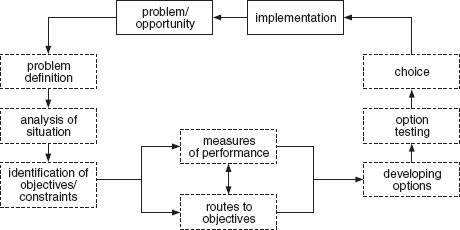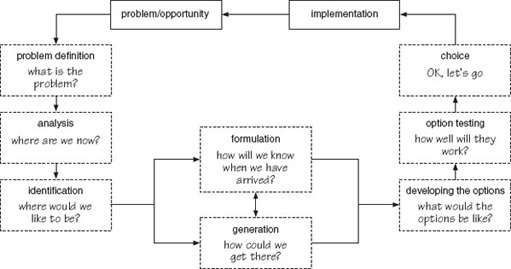3.8 Systems methodologies for managing change: hard systems approach
The stages of the hard systems approach are illustrated in Figure 34 and simplified in Figure 35. The model shown in these figures was developed by the Open Systems Group from earlier work by de Neufville and Stafford (1974). The stages ‘problem/opportunity’ and ‘implementation’ are shown in solid boxes because they occur in the real world. The other stages are in dashed boxes to indicate that they are thought processes.


For the sake of diagrammatic simplicity, two features of the hard systems approach are missing from Figures 32 and 33. First, iteration between stages is not shown. The stages of the approach are shown occurring in a logical sequence – this orderliness is the essence of the methodology. Jumping from one stage to another in a haphazard sequence is to be avoided. But there is always the possibility, and in some cases the necessity, of referring back to an earlier stage and then repeating subsequent steps. This iteration can occur for two reasons:
-
subsequent work has uncovered a mistake in earlier reasoning or an area of uncertainty
-
something happens in the environment of the investigation that makes previous assumptions invalid.
The second feature missing from the diagram is agreement. After each stage, it is essential that all stakeholders:
-
agree that the work has been carried out correctly
-
agree with the aims, content, timescale and people involved in the next stage.
Each stage is described briefly below.
